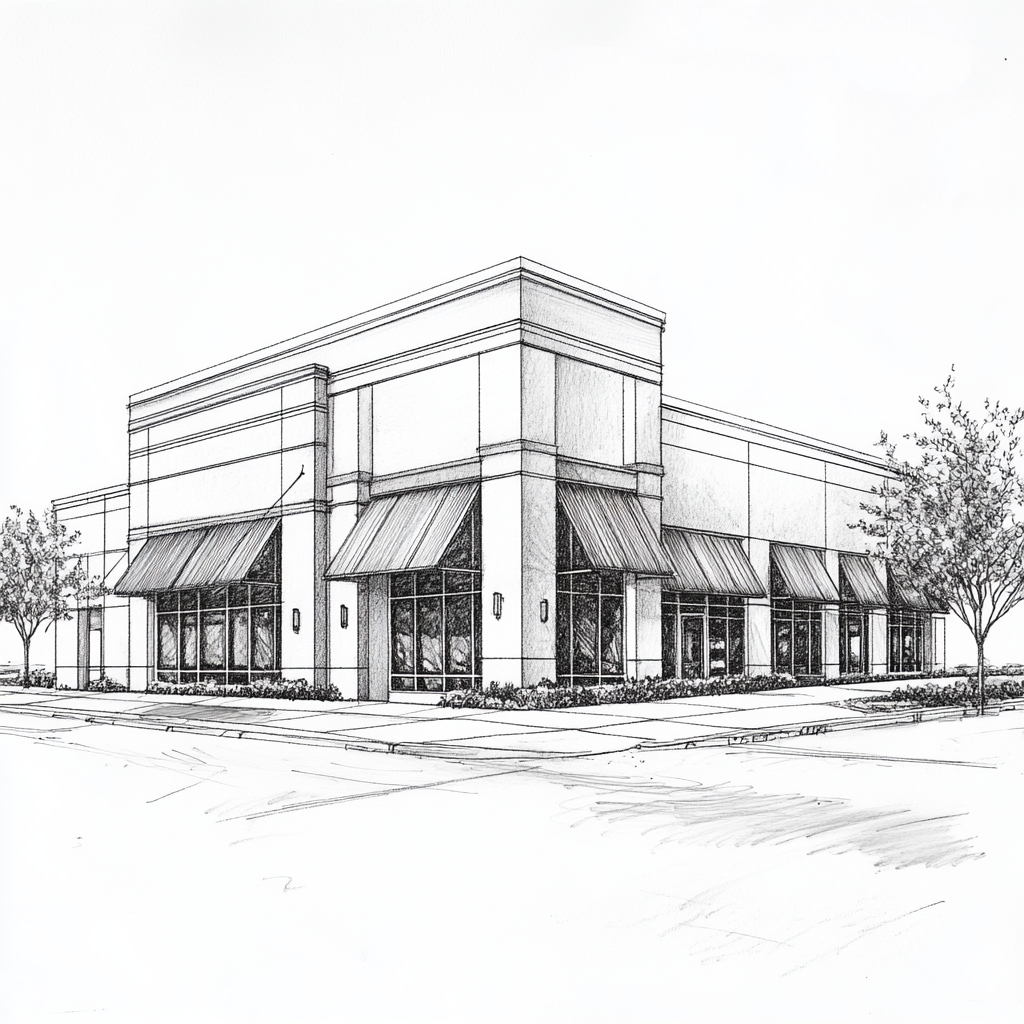In a world where businesses strive to stand out, the design of commercial buildings plays a pivotal role. More than just shells housing business processes, well-designed commercial buildings contribute significantly to a business’s identity, efficiency, and overall success. The fundamental objective is to encourage better interaction between the building and its inhabitants, ensuring it’s not just aesthetically pleasing but also practical and sustainable.
Understanding Commercial Building Designs
Definition of commercial building designs
Commercial building designs refer to the conceptualization and planning of buildings for commercial use. These structures house activities such as retail trade, offices, hospitality, or services. The design process incorporates various elements from structural considerations to aesthetic touches, prioritizing functionality, durability, and operational efficiency, all while meeting safety regulations and sustainability goals.
Difference between commercial and residential building designs
While both commercial and residential designs require the creation of functional and aesthetically pleasing spaces, they differ in their purpose, complexity, and scale. Residential designs focus on creating comfortable living spaces, often for a single family or small groups. On the other hand, commercial designs cater to larger groups, needing to facilitate varied activities like work, shopping, or dining. They usually involve larger structures, more stringent regulatory requirements, considerations for public access, higher traffic, and different materials and construction methods. Essentially, commercial designs generally require a larger-scale, more multifaceted approach than residential designs.
Key Factors in Commercial Building Designs
Functionality and efficiency
Commercial buildings must be designed to serve their intended function while promoting efficiency. This involves thoughtful space planning, selection of suitable materials, and integration of necessary technologies. The design should facilitate smooth daily operations, minimize wasted space, and potentially save on energy costs.
Aesthetics and branding
The aesthetics of a commercial building can have a significant impact on branding. A well-designed building conveys professionalism and company values, subtly influencing customer perception. Choosing an architectural style that aligns with the company brand and carefully orchestrating interior and exterior design elements can create a positive and memorable impression on customers and clients.
Safety and Accessibility Regulations
Safety and accessibility are mandatory considerations in commercial building design. Compliance with local and national building codes is required, as is adherence to regulations related to fire safety, occupancy limits, and accessibility for individuals with disabilities. A well-designed commercial building should equally accommodate all who use it, ensuring safety, comfort, and ease of mobility for everyone.
Environmental Considerations and Sustainability
As awareness of environmental issues increases, sustainable design practices are becoming more critical in commercial building projects. This can involve anything from utilizing eco-friendly building materials and energy-efficient systems, to incorporating elements like green roofs or rainwater harvesting. Not only can this reduce a building’s environmental impact, but it can also result in operational cost savings and contribute to a positive brand reputation.
Latest Trends in Commercial Building Designs
Open-Plan Designs
Open-plan designs, characterized by large, shared spaces and minimal interior walls or partitions, have surged in popularity in recent years. This architectural style fosters collaboration, flexibility, and a sense of community within the workplace. It also allows for better natural light penetration, reducing reliance on artificial lighting and contributing to a more pleasant and productive work environment.
Greener Buildings and Sustainable Design Practices
The push towards sustainability has significantly influenced the trends in commercial building designs. Concepts such as green or eco-friendly buildings are becoming the norm, utilizing energy-efficient systems, recycled or sustainable materials, and incorporating green spaces. These designs aim to minimize environmental impact while also reducing operational costs and enhancing the well-being of building occupants.
Incorporation of Modern Technology
The rise of advanced technology has reshaped the landscape of commercial building designs. Innovative solutions like smart building systems, automation, and IoT gadgets are increasingly being integrated into the design process. These technologies allow for more control over building operations, enhance security, improve comfort, and help save energy, making commercial buildings smarter and more efficient.
Mistakes to Avoid in Commercial Building Designs
Ignoring Local Building Codes and Regulations
One of the most common mistakes in commercial building design is neglecting local codes and regulations. These rules may govern everything from the building’s height and size to its fire safety measures and accessibility features. Ignoring these can potentially lead to heavy fines, delays, or even the suspension of the project.
Overlooking Future Expansion Possibilities
When designing a commercial building, it’s essential to consider potential growth and expansion in the future. Overlooking this can result in a lack of necessary space or facilities in the future, resulting in costly and inconvenient renovations. Always design with scalability in mind.
Not Considering Employee Comfort and Productivity
In commercial design, the comfort and productivity of the employees are of utmost importance. Ignoring this can lead to a decrease in morale and productivity, leading to potential losses for the company. Ensure that the building design incorporates elements such as natural light, comfortable temperatures, adequate personal space, and interactive areas to foster a conducive work environment.
MG Construction & Decks: Your Partner in Commercial Building Designs
In the complex landscape of commercial building designs, MG Construction & Decks emerges as a trusted partner. With a rich portfolio of completed projects across varied industries, we bring to the table our blend of experience, expertise, and innovation.
Experience and Expertise in Commercial Building Designs
Our team’s industry knowledge and proficiency enable us to comprehend and meet the unique requirements of each project. We stay updated with the latest trends and technologies, which helps us to devise solutions that are functional, aesthetically pleasing, and sustainable.
Process of working with MG Construction & Decks
Partnering with MG Construction & Decks ensures seamless execution from the conceptual stage of understanding your vision and needs, conducting thorough site inspection, crafting custom design plans, to the actual construction and final handover. Our process fosters clear communication, meticulous planning, and precise execution, resulting in projects that are delivered on-time and on-budget.

